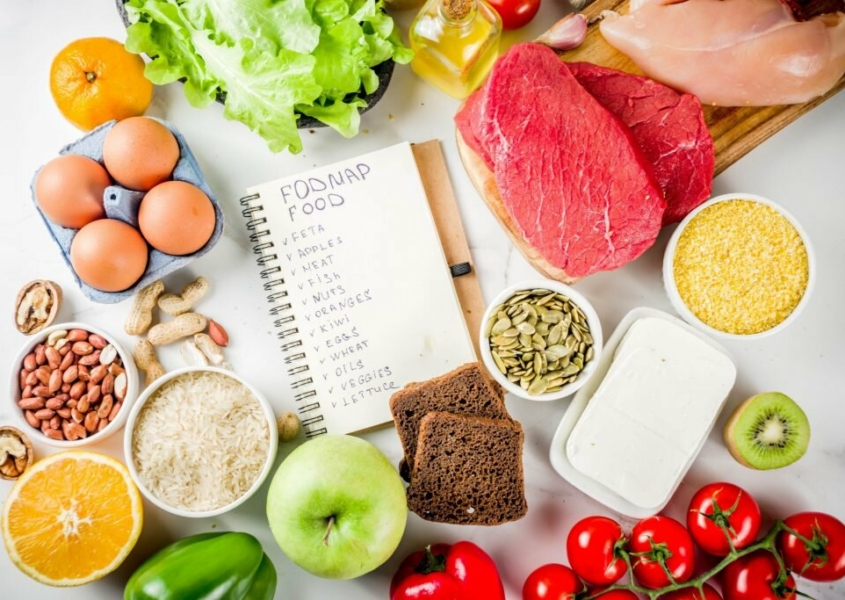FODMAP Foods List
If you have frequent digestive problems or have been clinically diagnosed with irritable bowel syndrome (IBS), there’s a good chance that something called FODMAPs are the culprit.
FODMAPs are found in many foods, and they’re basically carbs that are difficult to digest, leading to bloating and discomfort for many people. The term itself is an acronym for:
Fermentable – meaning they are broken down (fermented) by bacteria in the large intestine
Oligosaccharides – “oligo” means “few” and “saccharide” means sugar. These molecules are made up of individual sugars joined together in a chain
Disaccharides – “di” means two. This is a double sugar molecule
Monosaccharides – “mono” means single. This is a single sugar molecule
And Polyols – these are sugar alcohols
You can see why most people just call them FODMAPS…
By drastically lowering or eliminating the amount of FODMAP-containing foods in your diet, and slowing reintroducing foods back into your diet (with the help of a registered dietitian), you’ll be able to pinpoint which foods are giving you trouble. Finding out what foods cause digestive irritation, and avoiding then, can make a huge difference in your overall health and well-being. After all, many medical professionals refer to your digestive system as your “2nd brain.”
What are the first steps for a low FODMAP Diet?
The most important part of starting a low FODMAP diet is to get help from a registered dietitian – don’t fly solo on this one! Many healthcare providers have registered dietitians you can meet with, and their consultations are usually covered by your health insurance.
Different than some other diets – like the DASH diet – that are based on common sense practices and are relatively easy to follow with some online research, a low FODMAP diet is a pretty intensive diet program. You’ll probably be cutting out a significant number of foods from your diet, and the process of slowly reintroducing foods over time takes discipline and careful planning.
Step 1: Elimination Phase
Once you meet with a dietitian and you both agree that a low FODMAP diet is something that could work for you, you’ll begin what’s called the Elimination Phase. For somewhere between 2-8 weeks, you’ll avoid all FODMAPs. There a lot of foods that contain FODMAPs, so this phase requires a lot of self-restraint. You may even have to throw out all FODMAP foods you have at home, or move them to a locked cabinet (I know that sounds crazy but don’t be surprised if your dietitian suggests doing just that).
Step 2: Reintroduction Phase
Once you’ve hit the reset button on your digestive system by avoiding FODMAPs during the Elimination Phase, you’ll begin introducing FODMAP-containing foods one at a time back into your diet. Pay attention to how your body reacts to each food you’re reintroducing, and keep a journal to takes notes in. Obviously, if your body reacts poorly to a certain food you’ll want to avoid that in the future. The reintroduction phase can take a while, sometimes even 6+ months.
Step 3: Your New Diet
Once you’ve completed the Reintroduction Phase, you should have a solid idea of which foods cause digestive problems. You’ll want to adjust your diet accordingly, and make sure to avoid foods you’ve identified as triggers. Check ingredient labels carefully, and try cooking at home as much as possible. It can be tough eating out or ordering meal delivery if you have a variety of foods that upset your stomach.
If you want some of the cooking burden lifted off your shoulders, one option is to hire an affordable personal chef service. At Chefs For Seniors, we have clients following a low FODMAP diet and can accommodate those food restrictions.
High FODMAP foods
Generally, the highest FODMAP foods are:
- Onions
- Legumes
- Lactose (dairy)
- Wheat
- Rye
- Artificial sweeteners
- Apples
- Honey
- For a comprehensive list of high FODMAP foods, click HERE.
Low FODMAP foods
Generally, the lowest FODMAP foods include:
- Meat
- Poultry
- Fish
- Eggs
- Hard cheeses
- Nuts and seeds
- Wheat-free grains
- Bananas
- Berries
- Certain veggies
- For a comprehensive list of low FODMAP foods, check out this list HERE.
FODMAP diet recipes
Here are some websites with a great variety of low FODMAP recipes. If you’re working with a personal chef, you can share these recipes with them:
www.fodmapeveryday.com/recipes/
www.bbcgoodfood.com/recipes/collection/low-fodmap
You’ll also want to ask your dietitian for recipes.



